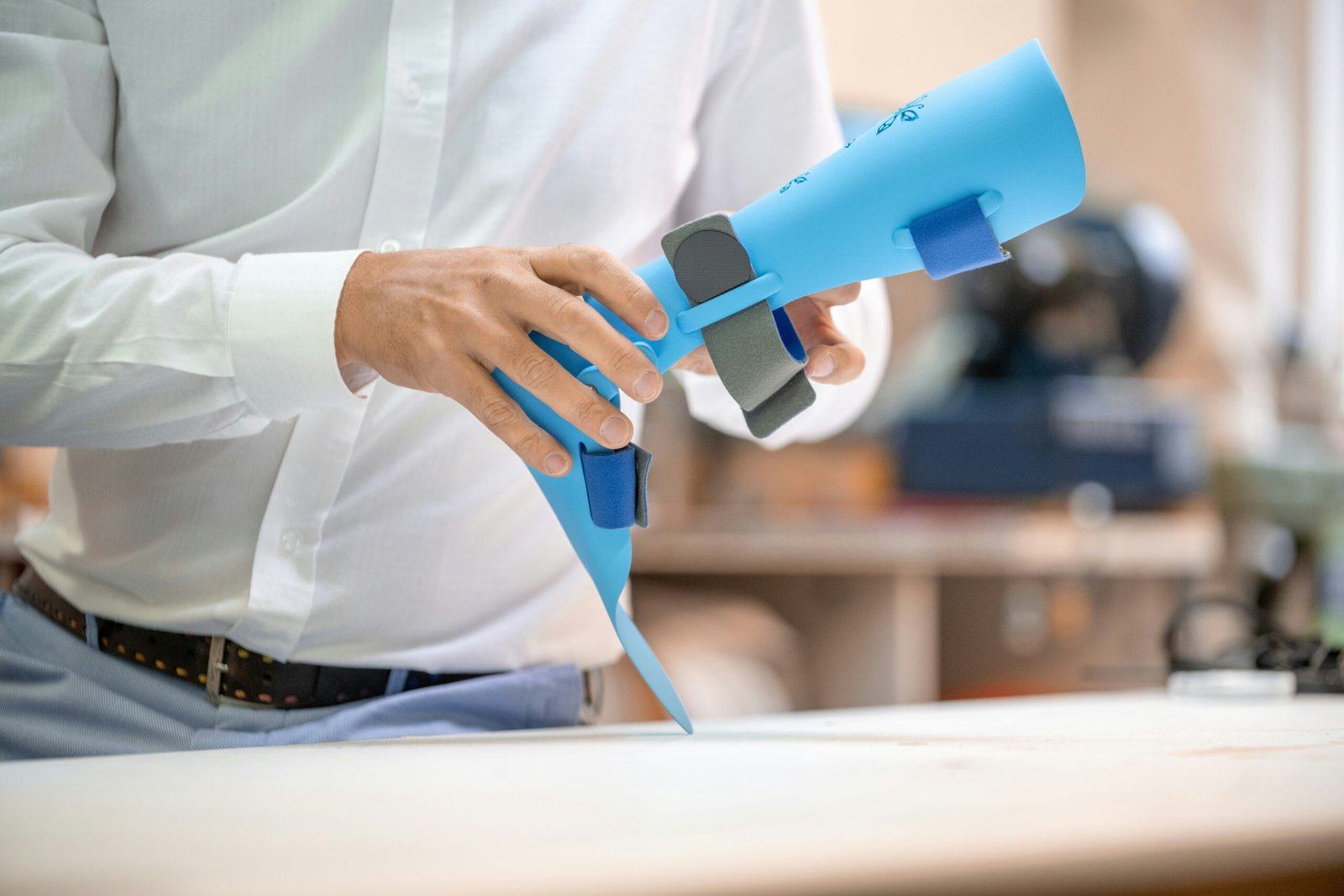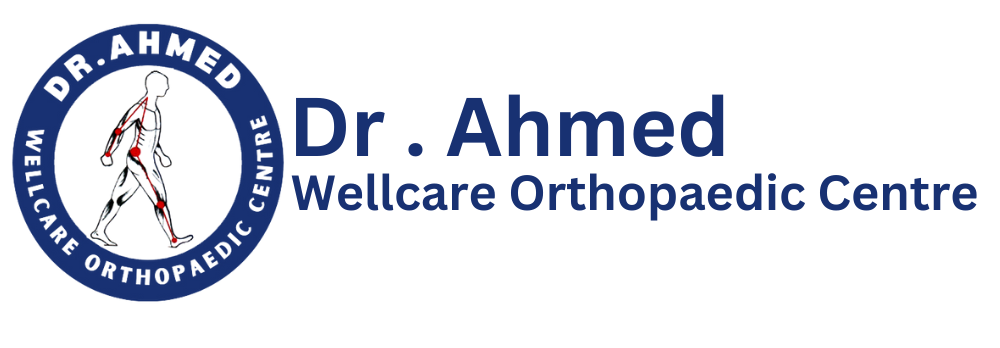Introduction to Orthopedic Technology Trends
Orthopedic technology encompasses the various advancements and innovations that enhance the diagnosis, treatment, and rehabilitation of musculoskeletal disorders. As the healthcare landscape evolves, orthopedic practices continually integrate cutting-edge technologies to improve patient care and outcomes. This rapid progression is driven by the need for more effective treatments, faster recovery times, and enhanced patient experiences.
In recent years, the orthopedic field has experienced numerous breakthroughs, including minimally invasive surgical techniques, 3D printing for custom implants, and sophisticated imaging technologies that allow for more accurate assessments. These advancements have fundamentally transformed how orthopedic surgeons approach complex conditions, enabling them to deliver more precise interventions tailored to individual patients’ needs. Such innovations also improve the overall effectiveness of treatment, reducing the duration of hospital stays and the need for extensive rehabilitation.
The significance of staying updated with the latest orthopedic technology trends cannot be overstated. Healthcare professionals must adapt to these changes to provide the best possible care and ensure positive patient outcomes. Continuous education and training are vital for practitioners to familiarize themselves with emerging tools and techniques. This proactive stance not only enhances their ability to treat patients effectively but also contributes meaningfully to the field’s overall progression. Moreover, understanding these trends empowers orthopedic specialists to engage in informed discussions with their patients regarding treatment options, thereby increasing patients’ trust and satisfaction.
As we delve deeper into the specific orthopedic technology trends anticipated for 2024, it is essential to recognize the profound impact these innovations can have on patient care. By embracing modern technologies, healthcare professionals can remain at the forefront of orthopedic medicine and significantly enhance the quality of life for their patients.
Artificial Intelligence and Machine Learning in Orthopedics
Artificial Intelligence (AI) and machine learning are increasingly becoming integral to orthopedic practices, revolutionizing the way practitioners approach patient care. Utilizing advanced algorithms, AI is capable of analyzing vast amounts of data to identify patterns that might be imperceptible to human clinicians. This capacity for predictive analytics plays a crucial role in enhancing decision-making processes and optimizing treatment outcomes.
One of the notable applications of AI in orthopedics is in the realm of diagnostics. For instance, machine learning models have demonstrated efficacy in interpreting radiological images, such as X-rays and MRIs, with an accuracy comparable to that of experienced radiologists. These technologies aid in the early detection of orthopedic conditions, allowing for timely intervention which is often critical in mitigating long-term impacts on patient mobility and quality of life.
Furthermore, AI-driven systems can help personalize treatment plans based on individual patient data, such as age, activity level, and specific health conditions. By integrating these multifaceted variables, orthopedic surgeons can devise tailored approaches that enhance recovery and reduce risks of complications. One prominent example is the implementation of AI in joint replacement surgeries, where predictive models analyze patient characteristics to forecast surgical outcomes, significantly improving pre-operative planning.
Case studies have shown tangible benefits from the integration of AI and machine learning in orthopedic settings. For instance, a pioneering study utilized machine learning algorithms to predict post-operative complications in knee arthroplasties, leading to adjustments in patient management strategies that ultimately improved recovery times. As the field continues to evolve, the collaboration between orthopedic specialists and data scientists is likely to deepen, fostering further advancements in patient-centered care and enhancing the overall effectiveness of orthopedic interventions.
Wearable Technology and Remote Monitoring
Over recent years, wearable technology has emerged as a pivotal component in the orthopedic field, revolutionizing patient care and rehabilitation. These innovative devices, often equipped with sensors, enable the continuous monitoring of patients’ movements and provide valuable insights into their adherence to rehabilitation programs. By tracking metrics such as range of motion, gait, and activity levels, orthopedic professionals can make informed decisions and timely interventions tailored to individual needs.
The integration of wearable technology into orthopedic care not only improves the quality of patient data but also enhances overall engagement. Patients equipped with wearable devices can actively participate in their rehabilitation process, feeling a greater sense of accountability for their recovery journey. This real-time feedback loop fosters a more collaborative relationship between healthcare providers and patients, ensuring adherence to prescribed rehabilitation routines.
In addition to rehabilitation, remote monitoring tools play a crucial role in post-surgical care and the management of chronic orthopedic conditions. These technologies allow for ongoing assessment of a patient’s recovery progress following surgery, reducing the need for frequent in-person visits. By continuously collecting data on various physical metrics, healthcare providers can detect potential complications early on, leading to timely interventions that can prevent readmissions and improve patient outcomes.
Furthermore, wearable devices facilitate the monitoring of chronic conditions such as arthritis, enabling healthcare providers to analyze symptoms and adjust treatment plans based on real-time data. This proactive approach not only enhances patient safety but also leads to more personalized care strategies. As the orthopedic field continues to embrace wearable technology, we anticipate a significant shift toward more accountable, data-driven healthcare practices that prioritize patient well-being and recovery efficiency.
3D Printing and Customized Implants
The integration of 3D printing technology within orthopedic medicine has revolutionized the way implants and prosthetics are designed and produced. This advanced manufacturing technique allows for the creation of customized orthopedic implants that fit the unique anatomical structures of individual patients. By employing computer-aided design (CAD) software and sophisticated scanners, surgeons can develop implants that ensure a precise fit, which significantly enhances stability and functionality. This customization translates to improved patient outcomes, reducing the likelihood of complications often associated with standard-sized implants.
As 3D printing technology continues to evolve, its role in orthopedic surgery is expected to expand further in 2024 and beyond. Emerging materials and techniques are likely to enable the production of a wider array of bespoke orthopedic solutions, catering to various conditions and demographic needs. Moreover, the introduction of bio-compatible materials in 3D printing presents the possibility of creating implants that can integrate seamlessly with bone and tissue, enhancing healing and long-term success rates.
In parallel with technological advancements, regulatory developments are paving the way for greater adoption of 3D printed implants. Regulatory bodies are beginning to recognize the benefits of customized solutions, resulting in streamlined approval processes for these innovative devices. This shift not only accelerates the availability of personalized care but also ensures that safety and efficacy standards are firmly upheld.
Looking ahead, the field of bioprinting is also on the cusp of groundbreaking changes. The potential for 3D printing to facilitate the creation of tissue or organ replacements marks a significant milestone in orthopedic technology and regenerative medicine. As research continues, the dream of printing living tissues that could one day replace damaged or diseased parts of the body is becoming increasingly feasible. The trajectory of 3D printing and customized implants indicates a promising future, highlighting the potential for tailored medical solutions to redefine patient care in orthopedics.
Frequently Asked Questions?
1. What are the top orthopedic technology trends in 2024?
Key trends include the increased use of robotic-assisted surgery, 3D printing for custom implants, augmented reality (AR) in surgery, smart implants, and the use of artificial intelligence (AI) for preoperative planning and postoperative care.
2. How is robotic-assisted surgery evolving in 2024?
Robotic systems are becoming more advanced with better imaging, improved precision, and faster integration with AI. These advancements help surgeons perform minimally invasive procedures with greater accuracy, leading to better outcomes and fewer complications.
3. What role does 3D printing play in orthopedic surgery in 2024?
3D printing allows for the creation of customized implants tailored to individual patients’ anatomy. In 2024, this technology is being used more frequently to produce patient-specific joint replacements, prosthetics, and surgical guides, improving fit and function.
4. How is augmented reality (AR) being used in orthopedic surgery?
AR technology provides surgeons with real-time, 3D visualization of the patient’s anatomy during surgery. This allows for better navigation and accuracy in implant placement, reducing the risk of complications and improving overall surgical precision.
5. What are smart implants, and how are they used in 2024?
Smart implants are devices equipped with sensors that monitor a patient’s healing and provide real-time data to doctors. In 2024, these implants are becoming more sophisticated, tracking things like load, motion, and healing progress, which can optimize postoperative care.
6. How is artificial intelligence (AI) impacting orthopedic care in 2024?
AI is being used to enhance diagnostic accuracy, improve surgical planning, and personalize rehabilitation protocols. In 2024, AI is integrated into robotic systems, helping surgeons predict outcomes and make data-driven decisions before and during surgery.
7. What are the benefits of personalized medicine in orthopedics?
Personalized medicine, driven by technologies like 3D printing and AI, allows treatments and implants to be tailored specifically to each patient. This trend reduces recovery times, lowers the risk of revision surgeries, and increases overall patient satisfaction.
8. How is wearable technology influencing orthopedic care in 2024?
Wearable devices, such as smart braces and exoskeletons, are increasingly used in rehabilitation to monitor progress and assist in recovery. These devices provide real-time data on movement, muscle activity, and load-bearing, helping patients recover more efficiently.
9. What role does virtual reality (VR) play in orthopedic training and surgery?
Virtual reality is being used for surgical training and simulation, allowing surgeons to practice complex procedures in a virtual environment. In 2024, VR is also used to educate patients about their conditions and upcoming surgeries, improving patient understanding and outcomes.
10. What are the key challenges in adopting new orthopedic technologies in 2024?
The primary challenges include the high cost of advanced technologies, the need for specialized training, integration with existing healthcare systems, and concerns about data security, especially with AI and smart implants. However, these technologies hold great promise in improving patient care.









